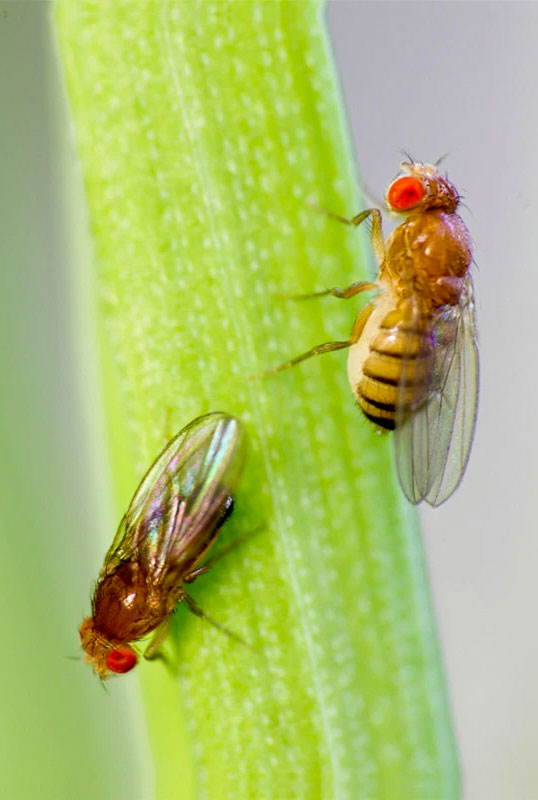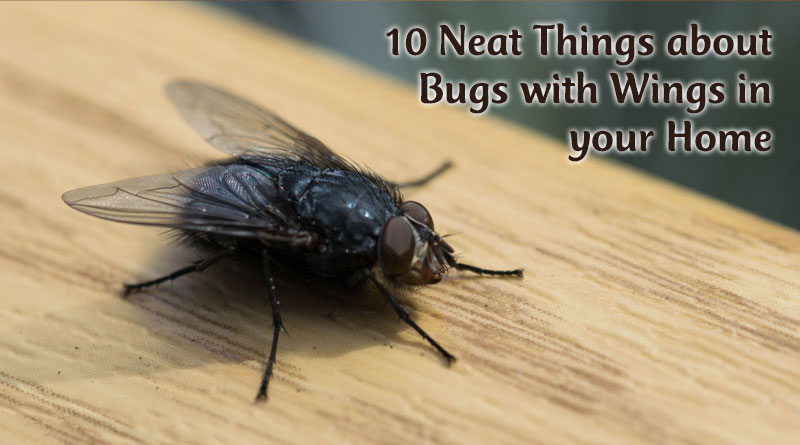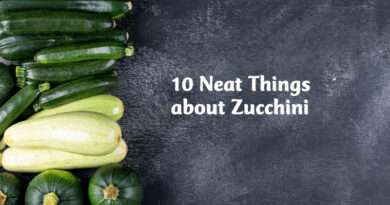About Bugs with Wings in your Home
1. Things with wings.
 Pesky little bugs fly around the house and everyone believes they are fruit flies. You should hope not. Fruit flies are hard to get rid of once they take up residence in your home. You may also be dealing with fungus gnats if you have house plants. In rare cases the flies could also be sewer/drain flies or, if in clouds and more rarely inside the house, midges.
Pesky little bugs fly around the house and everyone believes they are fruit flies. You should hope not. Fruit flies are hard to get rid of once they take up residence in your home. You may also be dealing with fungus gnats if you have house plants. In rare cases the flies could also be sewer/drain flies or, if in clouds and more rarely inside the house, midges.
2. Do you want flies with that?
Answer, emphatically, no! Fruit flies (Drososphila spp.) are often introduced to your home as microscopic eggs on the skins of fruit, especially bananas, but it could be apples or anything else. These guys are about 1/8th of an inch long, are generally tan coloured and have fat bodies and red eyes. Although their life cycle is only about a month long, a female can lay about 500 eggs, which take only a day or two to hatch.
3. Drop dead delicious.
Fruit flies cause millions of dollar worth of damage to fruit growers, not to mention the pests they are to homeowners. In Australia they are such a serious problem that one Prof. Richard Drew has spent 30 years trying to figure out how to deal with these bugs. He finally came up with a molasses-sweet, gel-like bait made of protein-rich brewery waste and laced with miniscule traces of insecticide. The bait is spread on the leaves of the fruit trees where it attracts the fruit flies, who land on the leaves and fall dead to the ground.
4. Out, damn’d fly!
Lady Macbeth would have had to wash a lot more than her hands to rid herself of fruit flies, had they been the cause of her distress. Fruit flies love to breed in rotting fruit but once established, they will find cosy nooks in crevasses of trash cans, rotting vegetables, garbage disposals, recycle bins, anywhere there is moisture and the likelihood of a meal. Getting rid of these bugs means great housekeeping diligence – setting traps of sticky yellow things and various other strategies.
5. Levitation for the nation.
In spite of their nastiness, fruit flies have long been a friend to scientists who like to experiment with them because they are inexpensive and breed quickly and die early. However, that was not the motivation at NASA recently where scientists used powerful electro-magnetic fields to levitate some fruit flies in order to study their behaviour under conditions of low gravity. Apparently animals, bugs, including fruit flies, being mostly made up of water, are what they call diamagnetic, which is pushed away by magnetic fields (hey, I’m just reporting what I read). They have also levitated frogs and fish and they’re thinking maybe people are next…
6. In-your-face fly.

7. Fungus gnats or fruit flies?
Aside from getting up close and personal with the flying bugs in your kitchen, you can find out if you have fungus gnats by cutting a raw potato into sections and putting these on the surface of the soil of suspected plants. Leave the spud bits a few days and then examine their under-sides. If they are harbouring a bunch of wrigglers, clear or cream with shiny black heads, you’ve just captured yourself a whole mess of fungus gnat larvae. Yuck!
8. Felling fungus gnats.
If you have fungus gnats, here’s how to handle them: 1. Keep soil on the dry side and avoid a potting mix that is too rich in peat moss or other humus. 2. Top up plants with a half-inch layer of sand. (Madame FG lays her eggs in the top 1/2 inch of damp soil. Sand dries out quickly and so is not a conducive medium for FG egg-laying.) 3. Drench infected soil with a) neem oil; b) a few drops of dishwashing soap; c) Safer’s soap or a larvacide you can buy at a nursery; d) a mixture of Bti (Bacillus thurengiensis israelensis). 4. Catch adults with yellow paper covered with something sticky. There are commercial products, but you can use a Post-it Note covered in Vaseline and place this on a toothpick or some other stick, parallel to the soil in the plant pot.
9. Kind of slow and stupid.
There may be a reason why fungus gnats don’t get the same respect from scientists that fruit flies do – FG is a bit of a weak flyer and appears not to get the message that you are harbouring murderous thoughts about him. Therefore, he is easy to swat and destroy.
10. It’s not all bad when it comes to fungus gnats.
Fungus gnats can actually be useful, although a serious infestation can kill plants when they move on from fungus and begin eating the hair-like feeder roots of plants and eventually get to the stem. You will notice the plant begin to look sluggish, its leaves may yellow and drop, and it may wilt, indicating a serious infestation of the roots. In the wild, however, fungus gnats act as pollinators and also carry mushroom and other fungus spores to help with propagation. Sadly, they can also carry plant diseases such as botrytis, verticillium, fusarium…






